How Nature Becomes Your Second Home: 5 Simple Steps
Ever stood in the forest and felt instantly calmer? Like somehow your shoulders drop an inch and your brain quiets down? That’s not just you being weird. That’s your body recognizing home.
The average American spends 93% of their life indoors. Ninety-three percent! No wonder connecting with nature feels like reuniting with a long-lost friend.
In this guide, I’ll show you five ridiculously simple ways to make nature your second home—no cabin purchase required. Whether you’re a concrete jungle dweller or suburban soccer parent, these steps work for anyone with a pulse and five minutes to spare.
But first, let me ask you something: what if the antidote to your stress isn’t another app or life hack, but something that’s been waiting outside your window all along?
Understanding Your Natural Environment
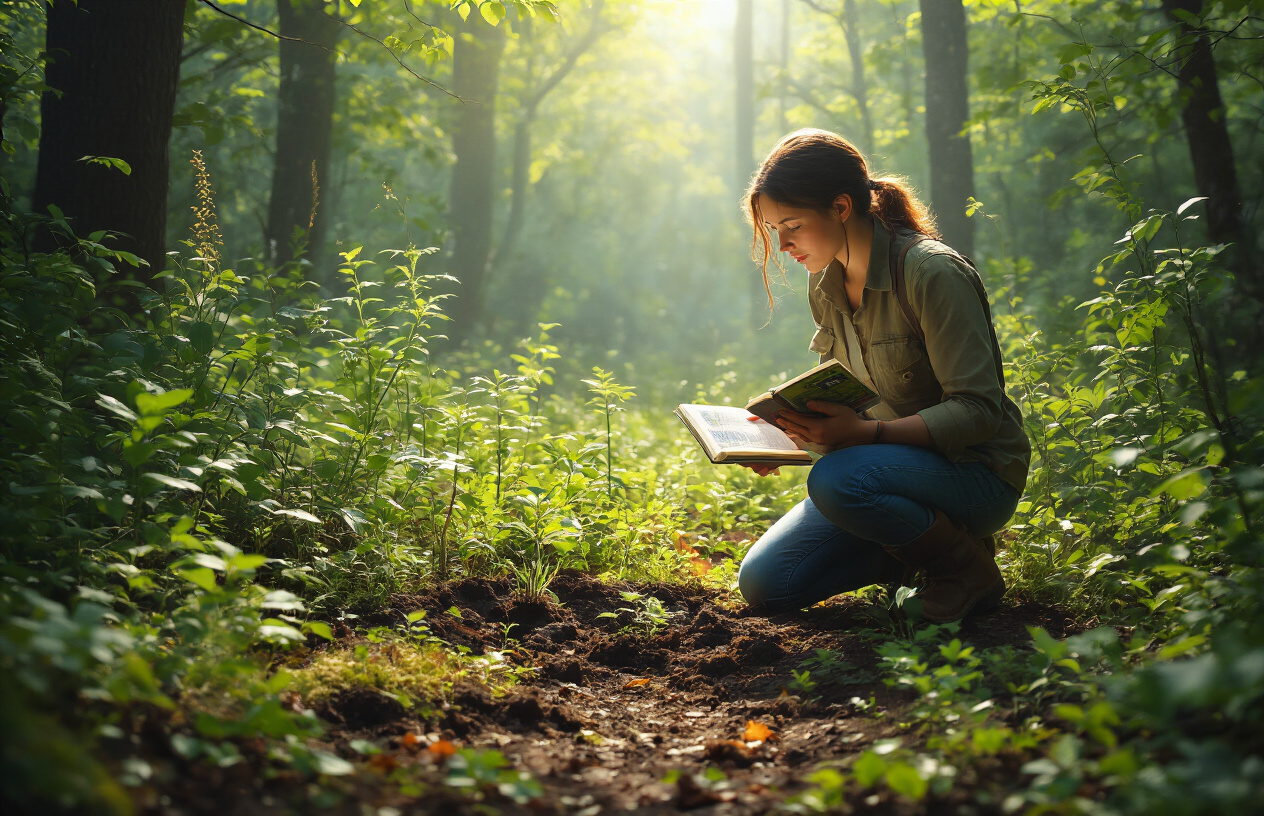
Identifying Local Flora and Fauna
Ever notice how some people just seem to belong in nature? Like they’ve got this secret code to the wilderness that the rest of us missed?
Truth is, they’ve simply taken the time to meet their neighbors – the leafy, furry, and feathered kind.
I used to walk through parks seeing just a blur of green and brown. Trees were just “trees” and birds were just “birds.” But the day I identified my first oak tree and recognized a cardinal’s song, something clicked. The world got bigger and smaller at the same time.
Start with what’s right outside your door. That “weed” in your yard? Might be plantain – nature’s band-aid for insect bites. That quick brown creature darting across your path? Could be a fox that’s been living near you for years.
Get yourself a couple of field guides specific to your region. The old-school paper ones with pictures work great. There are also amazing apps now like iNaturalist or Seek that let you snap a photo and get an ID instantly. It’s like having a naturalist in your pocket.
Pick one category to start – birds are perfect because they’re everywhere and distinctive. Learn five common birds in your area by sight and sound. Then five more. Before you know it, you’ll be that annoying friend who interrupts conversations to point out a chickadee.
The best naturalists I know keep journals. Nothing fancy – just notes about what they saw, where, and when. After a year of this, patterns emerge. You’ll realize the mockingbirds always return to your neighborhood around the same week in spring. You’ll notice how the oak leaves turn a specific shade before dropping.
And here’s the real magic – once you know who’s who, you start noticing relationships. How certain butterflies only visit certain flowers. How mushrooms pop up after specific weather patterns. The natural world isn’t just a collection of cool species; it’s a web of relationships.
Kids are natural identification machines – their brains are wired to categorize and memorize. Take a child with you, and you’ll both learn twice as fast. They’ll spot things you miss, guaranteed.
Don’t worry about knowing everything. Even professional ecologists specialize. The goal isn’t to memorize an encyclopedia; it’s to turn strangers into neighbors.
Recognizing Seasonal Changes
Want to know what separates outdoor enthusiasts from true nature-dwellers? It’s not gear or skills – it’s their relationship with time.
Most of us mark seasons by calendar dates or temperature shifts. But when nature becomes your second home, you start measuring time differently.
The year isn’t divided into four neat seasons anymore. It’s marked by the first red-winged blackbird’s call in March, the emergence of morel mushrooms in April, the lightning bug light show in June, the goldenrod bloom in August.
Start paying attention to phenology – the study of cyclic natural phenomena. It’s a fancy word for “what happens when” in nature. Indigenous cultures worldwide have always tracked these patterns because they matter for survival and harmony.
Make yourself a phenology wheel – a circular calendar where you note natural events as they occur throughout the year. After a couple of years, you’ll be able to predict with surprising accuracy when certain plants will bloom or animals will appear.
Weather patterns take on new meaning when you’re tuned in. That distinctive smell before rain? The way birds feed frantically before a storm? The clarity of distant mountains signaling weather changes? These aren’t just quaint observations – they’re part of nature’s communication system.
Even the sky tells time. The position of sunrise and sunset shifts predictably throughout the year. Certain stars and constellations appear and disappear with the seasons. Our ancestors used these cosmic clocks to structure their lives.
Listen for seasonal sounds too. Spring has its chorus of frogs and peepers. Summer buzzes with insect symphonies. Fall has its rustling leaves. Winter has its profound silence broken by the crack of freezing tree limbs.
The human body is designed to notice these shifts. Many people report seasonal food cravings that actually align with what’s naturally available at that time. In spring, we often crave leafy greens – exactly when wild edible greens emerge. In fall, we want root vegetables and heavier foods – precisely what’s being harvested.
Most fascinating is how seasonal awareness connects us to our ancestors. For most of human history, people lived by these natural rhythms. When you notice the subtle shifts between winter and spring, you’re experiencing the same thing humans have noticed for thousands of years.
Try this: pick one natural spot you can visit regularly – even if it’s just a city park or a tree outside your window. Commit to observing it weekly for a full year. Take photos or notes. You’ll be amazed at how much change you’ll document.
Finding Natural Areas Near Your Home
The biggest myth about connecting with nature? That you need to drive hours to a national park or live in a cabin in the woods.
Truth is, nature is persistent. It’s pushing through sidewalk cracks, taking over abandoned lots, flowing through urban culverts, and thriving in suburban backyards. You just need to know where to look.
Start with a 5-mile radius from your home. Pull up Google Maps and look for green spaces you might have overlooked. Those odd-shaped green patches between developments? Often they’re protected wetlands or drainage areas that support surprising biodiversity.
City parks are obvious choices, but dive deeper. Many have “natural areas” or “nature preserves” within them that are managed for wildlife rather than recreation. These spots often have fewer visitors and more critters.
Water always attracts life. Any creek, pond, river, or even drainage ditch will concentrate natural activity. Some of my best wildlife encounters happened along urban streams that most people hurry past without a glance.
School campuses, especially colleges, often maintain natural areas or arboretums open to the public. These can be peaceful havens hiding in plain sight.
Don’t overlook cemeteries. Particularly older ones tend to have mature trees, minimal pesticide use, and quiet atmospheres perfect for wildlife watching.
Community gardens are nature hubs too. They attract pollinators, birds, and other wildlife while connecting you with people who care about growing things.
Look up land trust properties in your area. Organizations like The Nature Conservancy, local Audubon chapters, and regional land trusts protect small parcels that often fly under the radar of typical “parks and recreation” searches.
Many states have Natural Heritage Programs that designate small but ecologically significant areas. Check your state’s environmental department website for these hidden gems.
Even the densest urban environments have nature. Rooftop gardens, planted medians, and corporate campuses with landscaping can become mini-nature retreats during lunch breaks.
The truly committed can actually help create natural areas. Many cities have adopt-a-spot programs for vacant lots or volunteer opportunities for habitat restoration. Transforming a neglected space into a pocket prairie or butterfly garden connects you to nature in an entirely different way.
Distance isn’t the only consideration. A small, accessible natural area you can visit daily will have more impact on your life than a spectacular preserve you visit once a year. Frequency builds relationship.
Your own yard or balcony counts too. Native plant gardening turns any space into nature’s doorstep. Even a window box can become a refueling station for migrating hummingbirds or butterflies.
The more you look, the more you’ll find. Nature isn’t someplace else – it’s everywhere, waiting for you to notice.
Creating Daily Nature Rituals
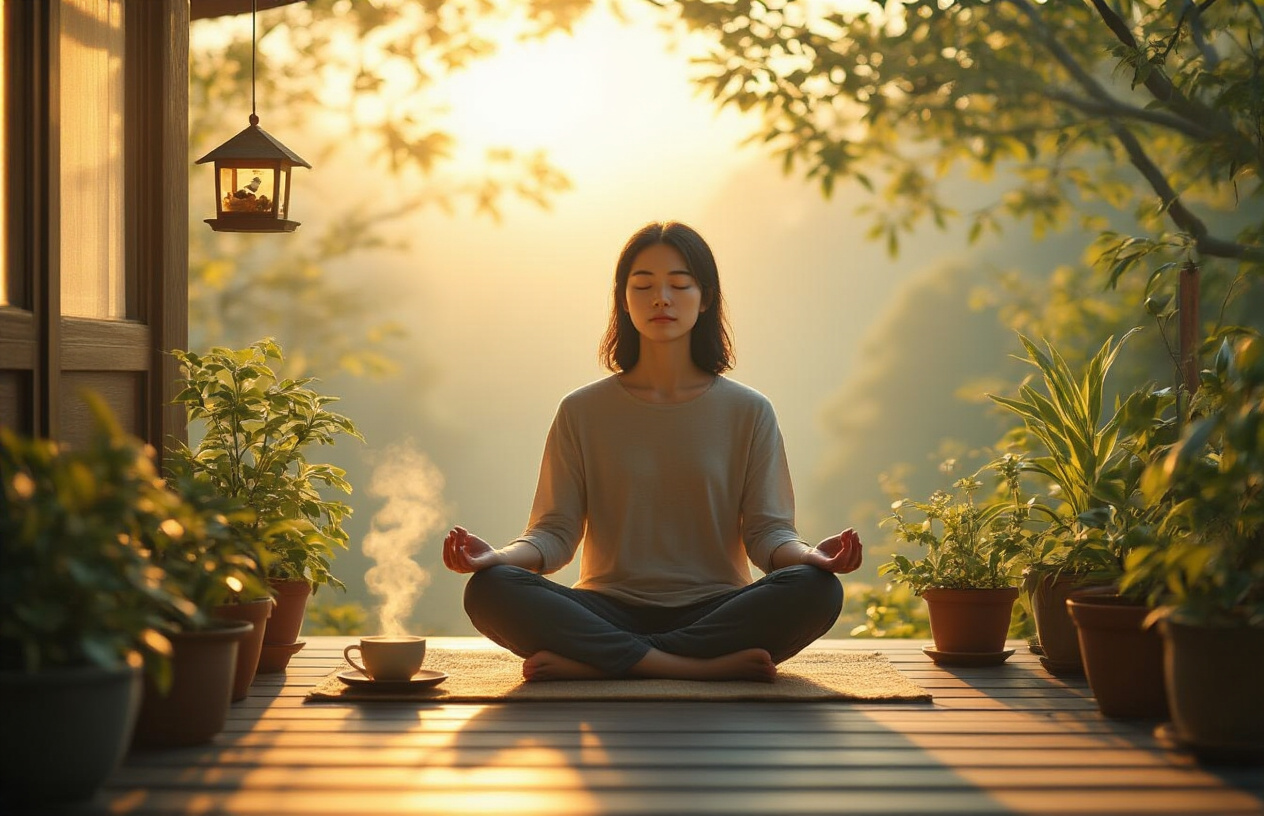
A. Morning Mindfulness in Natural Settings
Ever noticed how different your day feels when it starts with a phone screen versus a sunrise?
I used to be that person – alarm blares, grab phone, scroll for 20 minutes while still horizontal. By the time I actually got up, I already felt behind and stressed.
Then I tried something radical. I set my alarm 15 minutes earlier and took my coffee outside to my tiny apartment balcony.
Game. Changer.
Those few minutes listening to birds instead of news alerts reset my entire system. My shoulders dropped. My breathing slowed. My brain actually had space to think.
Morning nature rituals don’t require hiking boots or mountain views. They’re about creating small, consistent moments that ground you before the day’s chaos begins:
- Drink your morning beverage outside (even if “outside” is just an open window)
- Walk barefoot in grass for 5 minutes (the dewy morning kind feels amazing)
- Watch clouds while stretching
- Identify three bird sounds with your eyes closed
- Tend to a single plant, noticing new growth
The secret? Consistency beats duration. Five focused minutes outdoors beats a distracted 30-minute “nature walk” where you’re mentally replaying yesterday’s work drama.
Try this: choose one tiny morning nature ritual. Do it for seven days straight. Notice what shifts in your mood, energy, and outlook. The difference will shock you.
B. Evening Wind-Down Walks
The hours between work and sleep often feel like a wasteland of scrolling, snacking, and Netflix. We call it “unwinding” but our brains stay wired, our bodies stay tense.
What if your evening routine actually helped you transition to rest?
Enter the evening wind-down walk.
Not the power-walking, step-counting kind. I’m talking about the slow, notice-everything kind that signals to your body: day’s done, time to downshift.
The beauty is in the simplicity. After dinner, put on comfortable shoes and head out without a destination. Twenty minutes is plenty. Leave your phone at home (or silent in your pocket for emergencies).
Your only job: notice things.
- How the evening light hits buildings differently
- The changing smells as you pass gardens
- The sound your footsteps make on different surfaces
- The way air feels on your skin
- How neighbors’ windows glow with their evening routines
Research shows this kind of sensory-rich walking decreases cortisol levels and prepares your body for sleep far better than screen time.
My own evening walks started as a desperate attempt to break my doom-scrolling habit. Now they’re non-negotiable, like brushing my teeth. The days I skip, I feel the difference immediately – restless sleep, racing thoughts, morning grogginess.
Make it doable. If a solo walk feels impossible with your schedule, try a family “listening walk” where everyone has to point out one sound they notice. Or do a “porch sit” where you simply step outside for five minutes to watch the day close.
The goal isn’t distance or steps – it’s presence and transition.
C. Weekend Wilderness Exploration
Weekends offer precious time blocks for deeper nature connection. But here’s where most people get it wrong – they think weekend nature time requires elaborate planning, expensive gear, or Instagram-worthy destinations.
Nope.
The real magic happens when you approach weekend nature time with curiosity rather than achievement.
I learned this after exhausting myself trying to cram “epic” outdoor adventures into every weekend. Now I follow a simpler approach:
- Pick one natural area within 30 minutes of home
- Go there with zero agenda except to explore
- Stay at least 90 minutes (the time it takes your nervous system to fully downshift)
- Return to the same spot in different seasons
This approach transforms ordinary places into extraordinary experiences. That overlooked city park? Suddenly fascinating when you sit still long enough to watch squirrels create elaborate food storage systems. That small patch of woods? Becomes a science lab when you flip logs to find an entire miniature ecosystem.
Some weekend ideas that require minimal planning:
- Follow a stream from access point to its source
- Visit the same tree monthly for a year, documenting changes
- Lie on your back in five different outdoor locations, comparing cloud views
- Learn three edible plants in your region and forage a tiny amount
- Find evidence of animals (tracks, scat, fur) and try to tell their story
The point isn’t covering distance or checking off activities. It’s developing relationship with places through repeated visits and close attention.
Last month, I returned to a small nature preserve I’ve visited dozens of times. For the first time, I spotted a barred owl sleeping in plain sight on a branch I’ve walked under countless times. Not because I suddenly had eagle eyes, but because my familiarity with “normal” made the abnormal stand out.
That’s the reward of consistent wilderness exploration – suddenly seeing what was invisible before.
D. Incorporating Natural Elements into Daily Tasks
Nature doesn’t have to be something you visit – it can be woven directly into your most mundane routines.
Think about your regular tasks – cooking, working, cleaning, communicating. Each one offers opportunities to bring nature closer.
When I started working from home, my first instinct was to create a sleek, minimalist workspace. But something felt off. I was efficient but uninspired. Then I moved my desk near a window, added plants, and kept a small collection of stones and pinecones on my desk. My creativity doubled.
Here’s how to blend nature into your everyday:
Work rituals: Position your workspace near natural light. Keep a small collection of natural objects (feathers, interesting stones) on your desk to touch during calls or thinking moments. Use wood, ceramic, and other natural materials for office supplies when possible.
Meal preparation: Grow herbs in your kitchen window. Use wooden cutting boards and stone mortars instead of plastic tools. Open windows to hear outdoor sounds while cooking. Incorporate foraged elements when safe (wild berries in summer, pine needles for tea in winter).
Cleaning routines: Replace chemical cleaners with plant-based alternatives you can make yourself. Bring outdoor scents inside with herbs in vacuums or essential oils derived from local plants. Open windows during cleaning to create airflow.
Communication: Take phone calls while walking outside. Have important conversations on benches rather than couches. Send nature photos instead of text-only messages.
Sleep environment: Sleep with windows open when possible. Use cotton, wool, or linen bedding rather than synthetic materials. Keep plants in your bedroom that filter air overnight.
The goal isn’t perfection but integration – making nature part of your daily function rather than something separate you have to make time for.
I started small – just opening windows more often and bringing in fresh flowers weekly. Those tiny changes shifted my home’s entire feeling, making it feel more alive, more connected to the world beyond its walls.
By weaving these nature rituals into your days, weekends, and routine tasks, you create a life where nature isn’t something “out there” you occasionally visit. It becomes your constant companion, your second home, your natural state of being.
Building Your Outdoor Skills
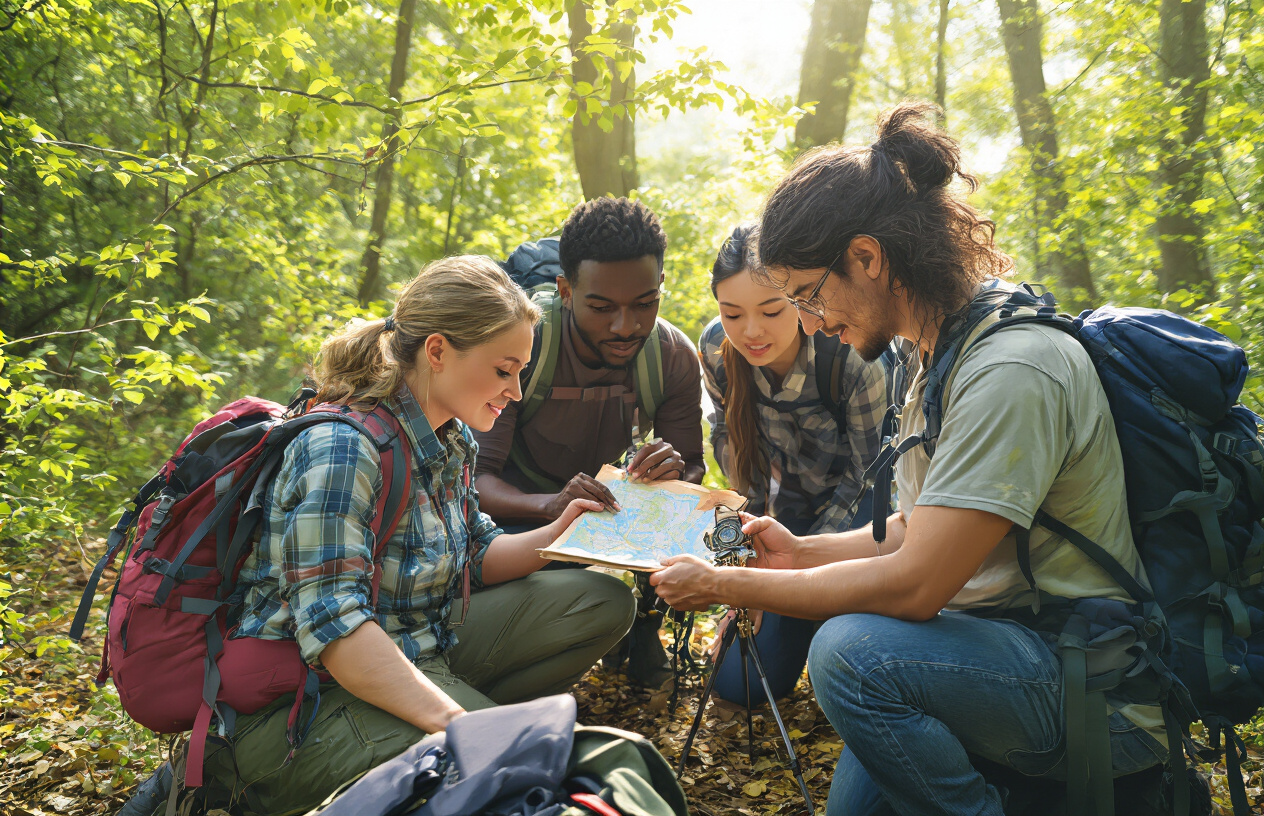
Essential Navigation Techniques
The wilderness doesn’t come with street signs or Google Maps. Truth is, most people can’t find north without their phone these days. But developing solid navigation skills changes everything about how you move through natural spaces.
Start with the basics: understanding a compass. Not just holding it and saying “that way’s north,” but really getting how it works with topographic maps. Speaking of maps – learn to read contour lines. They tell you if you’re about to walk up a gentle slope or slam into a cliff face.
The sun gives you directions for free. Early explorers navigated continents with it, and you can use it to find your way back to camp. During daytime, remember: sun rises in the east, sets in the west. Stuck somewhere at noon? Place a stick in the ground, mark the tip of its shadow, wait 15 minutes, mark again. The line between those points runs roughly east-west.
Stars become your nighttime GPS. Find the North Star (Polaris) and you’ve got your bearings. For the northern hemisphere folks:
- Locate the Big Dipper
- Find the two stars at the edge of its “cup”
- Measure about five times the distance between those stars in a straight line
- Hello, North Star!
But what if it’s cloudy? Natural landmarks save the day. Make mental notes of distinctive trees, rock formations, or mountain silhouettes. Creating “handrails” (following streams, ridgelines, or other linear features) keeps you oriented.
Phone batteries die, but these skills don’t. Practice in familiar settings before you need them in the wild.
Weather Reading Fundamentals
The forecast said sunshine, but those dark clouds rolling in tell a different story. Reading weather isn’t just cool—it can save your life.
Cloud patterns speak volumes. Those fluffy white cumulus clouds? Usually harmless. But watch if they start building vertically into towering cumulonimbus—that’s nature’s thunderstorm warning. Flat, dark stratus clouds often bring steady rain, while high, wispy cirrus clouds might signal weather changes in the next 24 hours.
Animals often know before we do. Birds flying low? Likely rain coming. Unusual animal activity—like frogs suddenly croaking like crazy or ants building up their mounds—often precedes storms.
Barometric pressure changes give you advance notice, too. Dropping pressure typically means approaching storms. No barometer? Your body might tell you—some people get headaches or achy joints when pressure drops.
The old saying “Red sky at night, sailor’s delight; red sky at morning, sailors take warning” actually has meteorological merit. Evening redness often means dry air to the west (good weather coming), while morning redness can indicate moisture in the air (potential storms approaching).
Wind direction shifts matter. In many places, winds from the south bring warmer temps, while northerly winds bring cooler air. Sudden wind changes often precede frontal systems.
Temperature drops, increasing humidity, and that distinctive smell before rain (petrichor) all give you clues hours before weather apps send notifications.
Basic Survival Knowledge
The wilderness doesn’t care about your Instagram followers or your fancy gear. When things go sideways, knowing these basics keeps you alive.
The survival rule of threes: You can survive roughly three minutes without air, three hours without shelter in harsh conditions, three days without water, and three weeks without food.
First priority in any survival situation? Stay calm. Panic kills faster than almost anything else. Take deep breaths. Assess your situation. Make a plan.
Shelter protects you from the elements. In cold environments, hypothermia is your enemy. A simple debris hut—basically a frame of sticks covered with leaves, pine needles, or whatever natural insulation you can find—can maintain your body heat. In hot environments, focus on shade and airflow to prevent heat exhaustion.
Water purification isn’t optional. Drink untreated water and you might add intestinal distress to your problems. Boiling (rolling boil for at least one minute) is the most reliable method. No pot? Improvise with hot rocks in a depression lined with non-poisonous leaves.
Fire gives warmth, protection, water purification, and massive psychological comfort. Carry multiple fire-starting tools: lighters, waterproof matches, ferrocerium rods. Learn friction methods as backup.
Signaling for rescue might become necessary. Three of anything (whistles, flashes, fires in a triangle) is the universal distress signal. A signal mirror can be spotted for miles on sunny days.
First aid knowledge plugs the gap until professional help arrives. Know how to address bleeding, breaks, burns, and bites—the common wilderness injuries.
Sustainable Foraging Practices
The woods aren’t just a grocery store where everything’s free for the taking. Responsible foraging means becoming part of the ecological system, not just extracting from it.
The first rule? Absolute identification certainty. Many edible plants have toxic lookalikes. Field guides help, but mentorship from experienced foragers is gold. Start with plants that have few dangerous lookalikes—dandelions, blackberries, and plantain are forgiving for beginners.
The 1/3 rule keeps ecosystems healthy: never harvest more than a third of any plant population in an area. This ensures regrowth and leaves food for wildlife. For mushrooms, cut rather than pull to leave the mycelium network intact.
Harvesting ethics matter. Some parts can be taken without killing the plant—outer leaves, fruits, nuts, and certain flowers. Root harvesting often kills the plant, so be extremely selective.
Timing your harvest maximizes nutrition and flavor while minimizing impact. Greens are often best in spring before flowering, berries when fully ripe, nuts when they begin naturally falling.
Rotate your harvesting locations. Returning to the same spots repeatedly stresses plant communities. Keep a foraging journal noting locations, dates, and observations to track your impact over time.
Process and preserve what you gather to minimize waste. Drying, freezing, fermenting, and canning extend your harvest’s usefulness.
Wildlife Observation Ethics
Getting close to wildlife is thrilling. Getting too close is dangerous—for you and them.
The golden rule: observe without disruption. Wild animals aren’t performers in a nature theme park. They’re living beings with needs, territories, and stress responses.
Maintain appropriate distances. Different species have different “flight distances”—the space they need to feel secure. Generally, if an animal changes its behavior because of your presence, you’re too close. Back away slowly.
Timing matters tremendously. Dawn and dusk (crepuscular hours) offer peak activity for many species. Seasonal considerations matter too—nesting birds, rutting deer, and denning predators deserve extra space during critical life phases.
Proper equipment enhances observation while minimizing disturbance. Good binoculars or a spotting scope let you watch from safe distances. Camera telephoto lenses capture memories without requiring close approaches.
Leave no trace principles apply double for wildlife watching. Pack out trash, stay on established trails to minimize habitat damage, and keep pets leashed or at home.
Avoid feeding wildlife, even indirectly by leaving food scraps. “A fed animal is a dead animal” isn’t just a catchy saying—human food damages wildlife health and creates dangerous dependencies and associations.
Report observations ethically. Location tagging on social media has led to habitat destruction and wildlife harassment. Share your experiences, but consider being vague about specific locations of sensitive species.
Developing these wilderness skills transforms your relationship with nature. You stop being a visitor and start becoming a participant in ancient patterns of human-nature connection.
Designing Your Outdoor Living Spaces
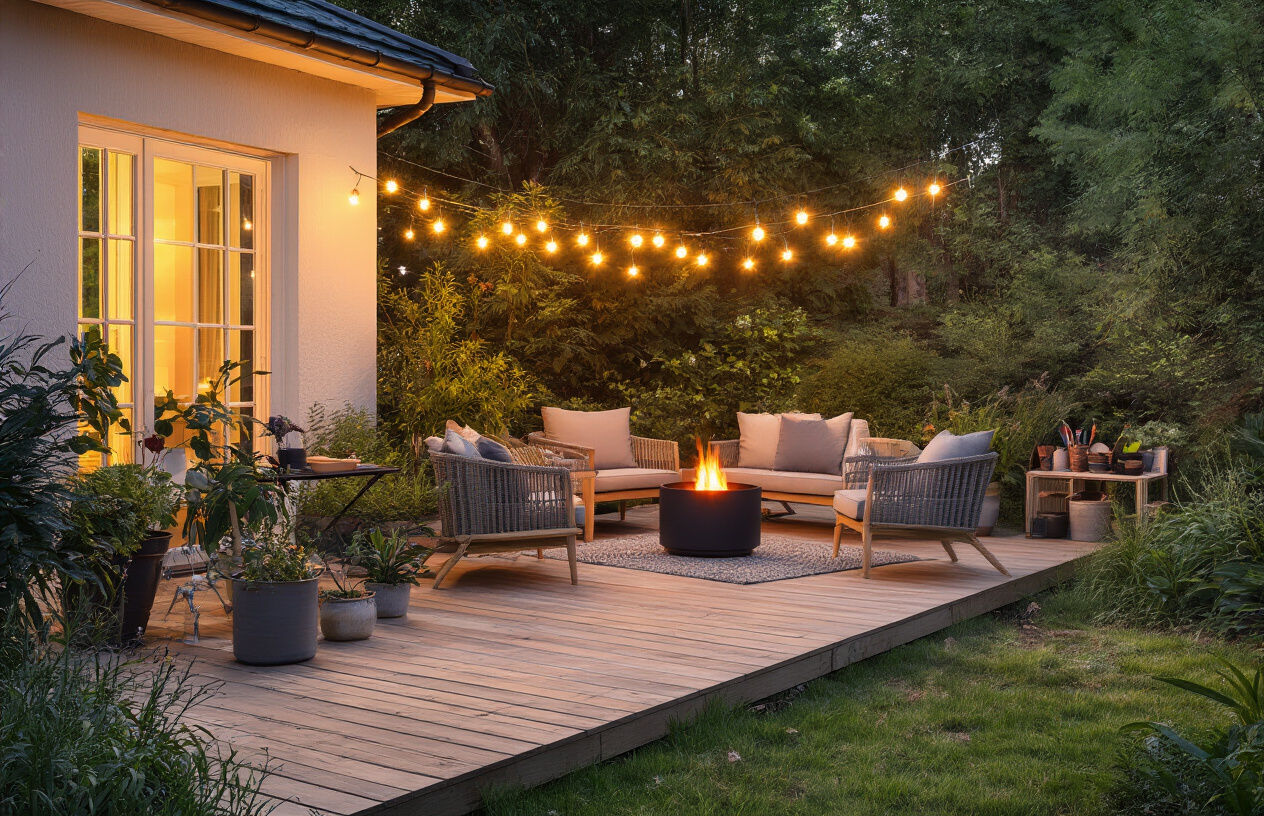
Creating a Nature-Inspired Home Corner
Ever noticed how a touch of green can transform any space? That’s not just your imagination—it’s science. We’re wired to feel better around plants and natural elements.
Most of us spend way too much time staring at screens inside boxy rooms. The solution? Bring the outdoors in. Creating a nature corner in your home isn’t just about aesthetics—it’s your daily dose of wilderness when you can’t hit the trails.
Start small. Pick a spot that gets decent natural light—a windowsill, a corner shelf, or that awkward empty space you’ve never known what to do with. This is your canvas.
Plants are your foundation. If you’re a beginner, grab some hard-to-kill varieties:
- Snake plants
- Pothos
- ZZ plants
- Succulents
They’ll forgive your neglect while purifying your air. Win-win.
But a nature corner goes beyond just plants. Think textures, materials, and items that speak to your outdoor soul:
- A small tabletop fountain for that babbling brook sound
- Stones or driftwood you’ve collected on hikes
- Natural fiber baskets or wooden elements
- Prints or photos of your favorite landscapes
The trick is making it personal. That rock you picked up at the beach last summer? Perfect. The pinecone from your camping trip? Absolutely. These items carry memories and connection—they’re not just decor.
For the truly committed, consider a small terrarium as a centerpiece. It’s like having your own miniature forest to care for, and there’s something deeply satisfying about creating and maintaining a tiny ecosystem.
Lighting matters too. Harsh overhead lights? No thanks. Try warm, diffused lighting that mimics the golden hour in the forest. A Himalayan salt lamp or string lights woven among your plants can create that magical glow.
Your nature corner doesn’t need to be picture-perfect or Instagram-worthy. It just needs to make you feel something—a reminder of wide open spaces, fresh air, and the world beyond your walls. Each time you water a plant or add a new natural treasure, you’re strengthening that connection.
The best part? This space evolves with you. As your outdoor adventures continue, so does your collection of natural mementos and your understanding of what elements bring you peace.
Setting Up an Outdoor Relaxation Area
The pandemic taught us something we should’ve known all along—our backyards, balconies, and patios aren’t just extra square footage. They’re potential sanctuaries.
Creating an outdoor relaxation area doesn’t require a massive budget or professional landscaping. It’s about crafting a space that pulls you outside regularly, making nature part of your daily rhythm rather than a special occasion.
First, assess your space honestly. Tiny apartment balcony? Sprawling backyard? Something in between? Each has potential.
For small spaces:
- Vertical gardening using wall planters
- A compact folding chair with a side table
- String lights overhead for evening ambiance
- A weather-resistant cushion or two
For larger areas:
- Define zones using outdoor rugs or different flooring materials
- Create privacy with strategic planting or bamboo screens
- Install a hammock or hanging chair (game-changer!)
- Consider a small fire pit for extending outdoor seasons
The key is comfort. If it’s not comfortable, you won’t use it. Period. Invest in seating that makes you want to linger—weather-resistant cushions, outdoor pillows, maybe even an outdoor bean bag if that’s your thing.
Protection from the elements makes a huge difference in how much you’ll actually use your space. Consider:
| Weather Challenge | Simple Solution |
|-------------------|-----------------|
| Too sunny | Umbrella, shade sail, or pergola |
| Light rain | Canvas awning or patio cover |
| Bugs | Citronella candles, screened area, or natural repellent plants |
| Wind | Strategic placement of potted plants as windbreak |
Your outdoor relaxation area should engage multiple senses. The sound of wind chimes or a water feature. The fragrance of herbs or flowering plants. The texture of different natural materials under your feet or hands.
Don’t underestimate the power of wildlife-friendly additions. A simple bird feeder, butterfly-attracting plants, or a bee hotel brings your space alive with visitors, connecting you to the wider ecosystem right from your seat.
Evening use requires thought. Solar pathway lights, battery-operated candles, or string lights extend your outdoor hours past sunset. There’s something magical about sitting outside as darkness falls, watching stars appear one by one.
The ultimate test of a successful outdoor relaxation area? When you find yourself reaching for your shoes and heading out there without thinking—to read, to sip your morning coffee, to call a friend, or just to sit and breathe. When nature becomes the default rather than the exception, you’re doing it right.
Growing Your Own Mini Ecosystem
Gardening isn’t just a hobby—it’s a relationship with life itself. And you don’t need acres of land to experience it. A mini ecosystem can thrive in containers, raised beds, or even indoor setups.
Growing things changes you. There’s something transformative about witnessing the journey from seed to sprout to harvest—especially when you get to eat the results.
Start with your goals. Are you looking for:
- Fresh herbs for cooking
- Vegetables for your table
- Flowers for pollinators
- Native plants to support local wildlife
Your available space and sunlight will shape what’s possible, but almost everyone can grow something somewhere.
Container gardening is the great equalizer. Even a sunny windowsill can support herbs like basil, mint, and chives. A balcony might accommodate tomatoes, peppers, and compact varieties of zucchini in large pots.
If you’re lucky enough to have ground space, consider a small raised bed. The benefits are numerous:
- Better drainage
- Easier to maintain without bending
- Warmer soil in spring
- Clear boundaries (helpful for beginners)
The magic happens when you start thinking in systems rather than individual plants. In nature, nothing exists in isolation. Everything connects.
Try companion planting—where certain plants benefit others when grown nearby:
| Plant | Good Companions | Benefits |
|-------|-----------------|----------|
| Tomatoes | Basil, marigolds | Pest repellent, improved flavor |
| Carrots | Onions, rosemary | Confuses carrot flies |
| Beans | Corn, sunflowers | Beans fix nitrogen, tall plants provide support |
| Lettuce | Herbs, strawberries | Shared space efficiency |
Invite beneficial insects by including flowering plants. Marigolds, nasturtiums, and calendula aren’t just pretty—they’re working members of your garden community, attracting pollinators and sometimes deterring pests.
Water collection becomes second nature when you’re growing things. That bucket catching shower water while it warms up? Perfect for your plants. The rainwater from your roof? Liquid gold.
Composting completes the circle. Kitchen scraps and yard waste transform into rich soil amendment. There’s profound satisfaction in watching yesterday’s coffee grounds and eggshells become tomorrow’s tomatoes.
Start observing cycles. Notice how morning sun hits different areas. Watch which spots drain quickly after rain and which stay damp. These observations connect you to natural rhythms and patterns.
Your mini ecosystem will fail sometimes. Seeds won’t sprout. Plants will die. Pests will find your favorites. This isn’t failure—it’s feedback. Each gardening challenge teaches you something about your specific environment and builds resilience—both in your garden and in yourself.
The true reward isn’t just harvesting food or flowers. It’s developing an intuitive understanding of natural systems. You’ll start noticing subtle seasonal shifts, understanding weather patterns, recognizing beneficial insects versus pests—skills that extend far beyond your garden boundary.
Your mini ecosystem becomes a living laboratory, a meditation space, and a teacher all in one. And bit by bit, the line between “garden” and “nature” starts to blur.
Deepening Your Nature Connection
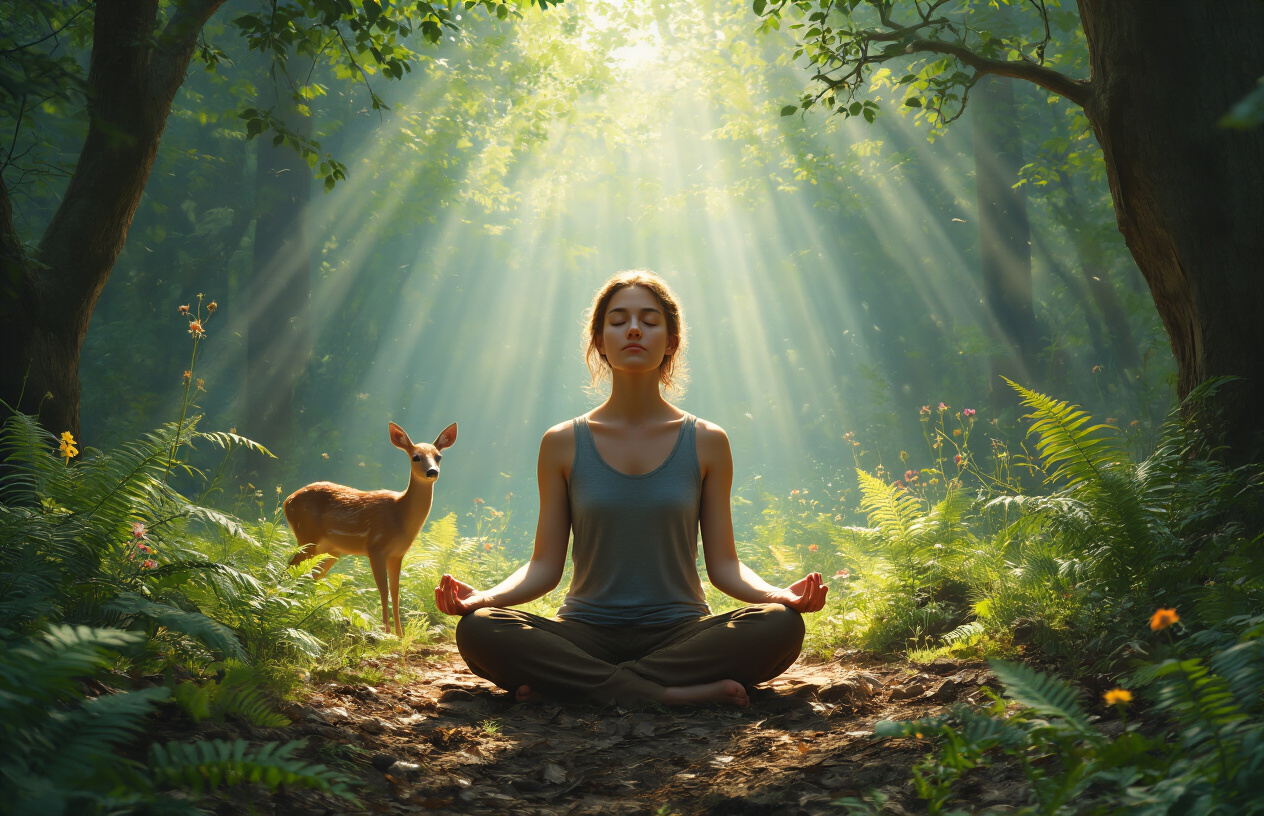
Journaling Your Nature Experiences
Remember when you kept a diary as a kid? Those secret thoughts and dreams hidden under your mattress? Well, nature journaling is like that, but way cooler.
Grab a notebook—nothing fancy needed. Even that half-used composition book from three years ago works perfectly. The beauty of nature journaling is its simplicity and how quickly it deepens your connection to the outdoors.
I started mine after a particularly rough week at work. Just sat on my porch and wrote about the cardinal that wouldn’t stop harassing my bird feeder. Something shifted that day. I began noticing things I’d walked past a thousand times.
Your journal doesn’t need to be a masterpiece. Jot down:
- What caught your eye
- How the air smelled
- The sounds you heard (even that annoying leaf blower from next door)
- Any feelings that bubbled up
Some folks add sketches, press leaves, or stick in photos. I can barely draw a stick figure, but I still doodle what I see. It’s not about being Picasso—it’s about paying attention.
Try this: Visit the same spot weekly for a month. Record the subtle changes. That tree you thought was boring? You’ll start noticing how dramatically it transforms with the light, weather, and seasons.
The real magic happens when you flip back through old entries. You’ll see patterns you never noticed before—when certain birds appear, how storms affect your local creek, or how different you feel after spending time under your favorite oak tree.
Joining Local Conservation Efforts
You’re probably thinking, “Great, another thing to add to my packed schedule.” But hear me out.
Local conservation isn’t all about picking up trash (though that’s important too). It’s about becoming part of something bigger than yourself—a community that cares about the same patches of earth you do.
I joined my neighborhood stream team on a whim after seeing a flyer at the coffee shop. Just planned to go once. Three years later, I know every bend in our creek and the names of twenty neighbors I’d have never met otherwise.
Start small:
- Follow local environmental groups on social media
- Attend a single event (no commitment required)
- Ask questions about projects that interest you
- Bring a friend (everything’s less awkward with backup)
What surprised me most wasn’t how good it felt to help—it was how much I learned. The retired biology teacher who runs our invasive species removal taught me more in one afternoon than my entire high school science education.
Conservation work connects you with nature on an entirely different level. You develop this weird protective feeling about “your” forest or wetland. You’ll find yourself checking on specific trees after storms or bragging about wildlife sightings like they’re your personal achievements.
And you know what? There’s something deeply satisfying about pointing to a restored meadow and thinking, “I helped make that happen.” It’s like having your name secretly written in the landscape.
Teaching Others About Natural Wonders
Nothing cements your own nature connection like sharing it with someone else. And no, you don’t need to be David Attenborough to do this.
The first time my niece visited, I panicked about entertaining her. Turned out, the hollow tree in the park was more fascinating to her than any planned activity. Her wonder at something I passed daily without noticing rekindled my own curiosity.
You can start by sharing with:
- Kids (they ask the best questions)
- Friends who need a break from screens
- Anyone who mentions being stressed (nature is the original therapy)
- That coworker who never goes outside
Teaching doesn’t mean formal lectures. It’s pointing out the weird fungus growing on a log. It’s showing someone how to identify bird calls. It’s explaining why that patch of wildflowers matters to local bees.
The beautiful thing about sharing nature knowledge is that it’s a never-ending exchange. Last month, a seven-year-old taught me to spot salamander eggs in our creek—something I’d missed for years despite regular visits.
When you share your enthusiasm, it multiplies. My neighbor started joining my dawn walks after I mentioned the barred owls that hunt in our area. Now she texts me owl updates when I’m traveling.
Becoming a nature mentor creates a ripple effect. The person you take hiking might later introduce their stressed-out friend to the same peaceful spot. Your small act of sharing spreads outward, creating more nature advocates in the process.
Practicing Gratitude for Environmental Gifts
I used to roll my eyes at gratitude practices. Seemed too woo-woo. Then during a particularly awful week, I sat on a park bench and made myself list five things I appreciated about that spot. Felt awkward at first, but something clicked.
Nature gives us so much for free:
- Clean air from trees working 24/7
- The mental health boost from birdsong
- Water filtering through wetlands
- That incredible feeling when sunlight hits your face just right
- The reliable rhythms of seasons that remind us everything changes
Gratitude isn’t just saying “thanks” to the universe. It’s actively recognizing how deeply our lives intertwine with natural systems. When you acknowledge these gifts, you start noticing them everywhere.
Try creating small rituals. Before I harvest anything from my garden, I take a moment to appreciate the countless processes that made it possible—from pollinators to decomposers to rain cycles. Sounds cheesy, but it fundamentally changes how I relate to my food.
This practice transforms ordinary experiences. That sudden summer downpour becomes less inconvenient when you recognize it’s replenishing groundwater you’ll drink later. The fallen leaves you’re raking represent nutrients cycling back into soil that feeds your neighborhood trees.
The most powerful part? Gratitude creates stewardship. When you truly appreciate something, you want to protect it. You think twice about pesticides when you’ve thanked bees for their work. You consider water conservation after acknowledging your dependence on healthy watersheds.
This isn’t just good for the planet—it’s good for you. Research consistently shows that nature-based gratitude practices reduce stress and increase happiness. In our frantic world, pausing to appreciate a sunset or thank a vegetable garden isn’t just environmental—it’s revolutionary self-care.
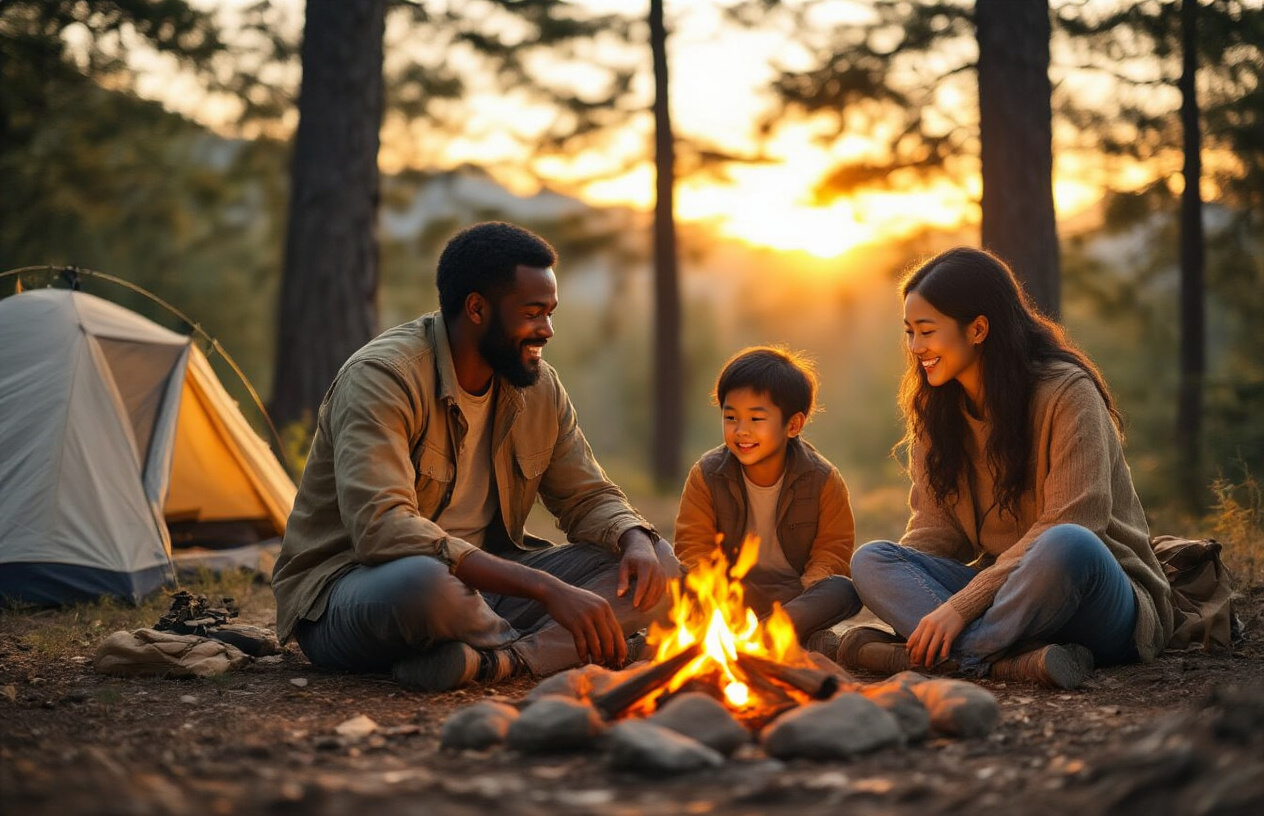
The journey to making nature your second home doesn’t happen overnight, but through intentional steps that transform your relationship with the outdoors. By understanding your local environment, establishing daily nature rituals, developing practical outdoor skills, creating inviting outdoor living spaces, and deepening your connection through mindfulness, you build a lasting bond with the natural world that enriches every aspect of your life.
Take one small step today—whether it’s identifying local birds, enjoying your morning coffee outside, learning basic foraging, adding comfortable seating to your patio, or simply sitting in silence among trees. As you integrate these practices, you’ll find that nature isn’t just a place you visit, but a vital part of who you are. Your second home awaits, with open arms and endless opportunities for growth, healing, and joy.





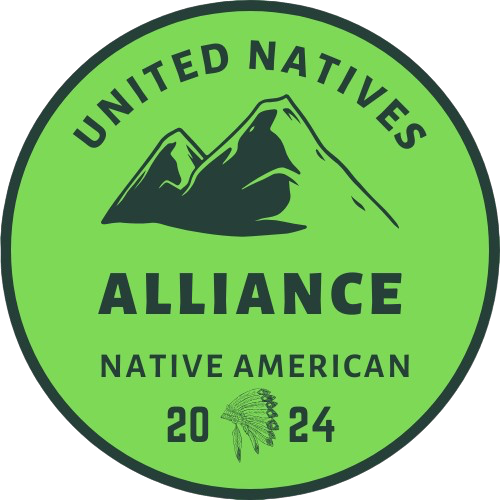
https://shorturl.fm/S6rjO
https://shorturl.fm/D6m3J
https://shorturl.fm/Gskqp
https://shorturl.fm/dlyzK
https://shorturl.fm/SlouN
https://shorturl.fm/PQ6vT
https://shorturl.fm/MKwRy
https://shorturl.fm/eY52G
https://shorturl.fm/EHn6I
https://shorturl.fm/k5kUx
https://shorturl.fm/WZeRS
https://shorturl.fm/66FfZ
https://shorturl.fm/ZnRNX
https://shorturl.fm/oQVC6
https://shorturl.fm/ycrMc
https://shorturl.fm/XLZvA
https://shorturl.fm/9yC3t
https://shorturl.fm/JViqb
https://shorturl.fm/slwyc
https://shorturl.fm/aNEp3
https://shorturl.fm/n2ITZ
https://shorturl.fm/OHoeC
https://shorturl.fm/yvhnn
https://shorturl.fm/zcOdi
https://shorturl.fm/NC25Z
https://shorturl.fm/kD5J5
https://shorturl.fm/GcjuG
https://shorturl.fm/RVXHo